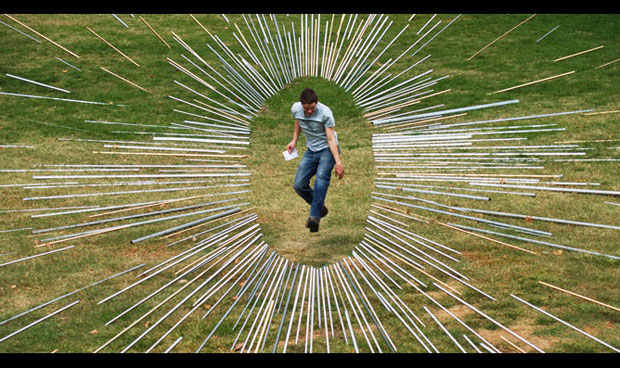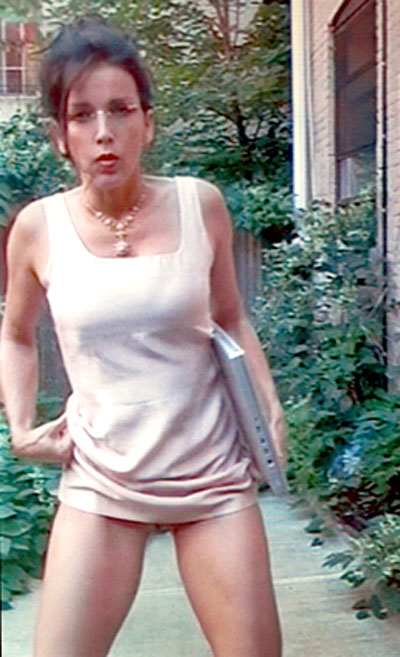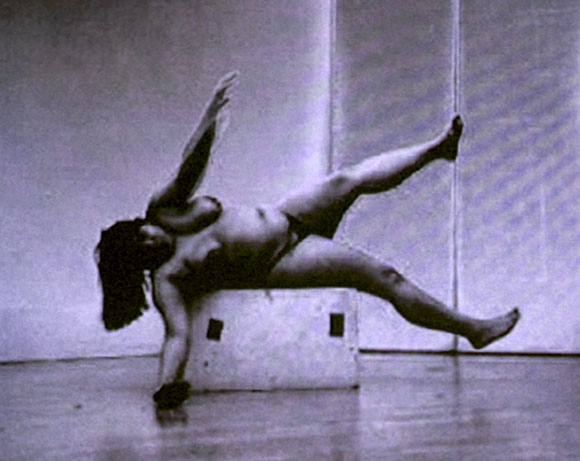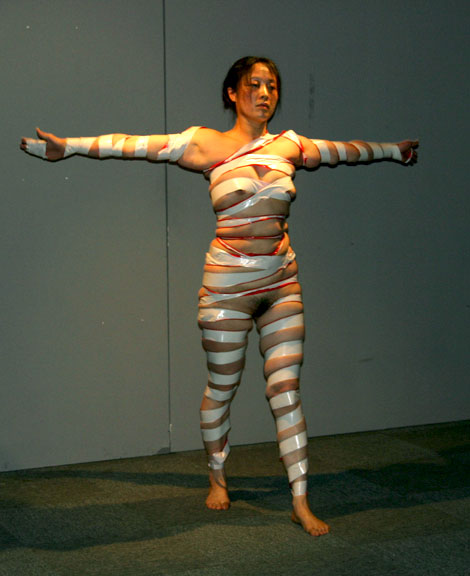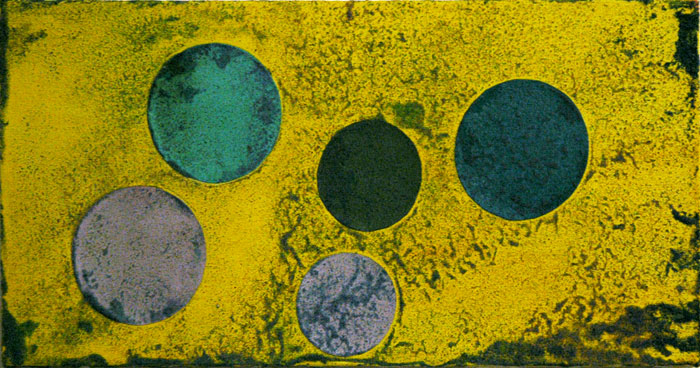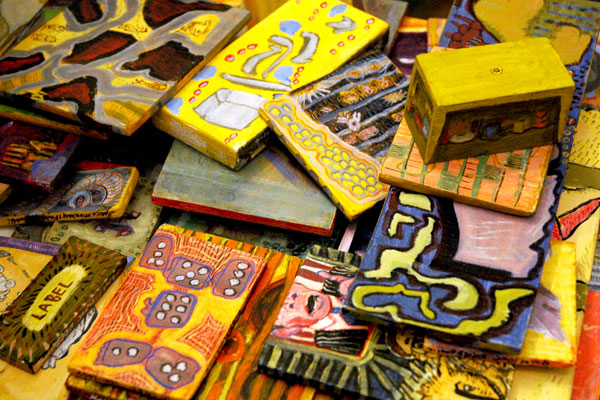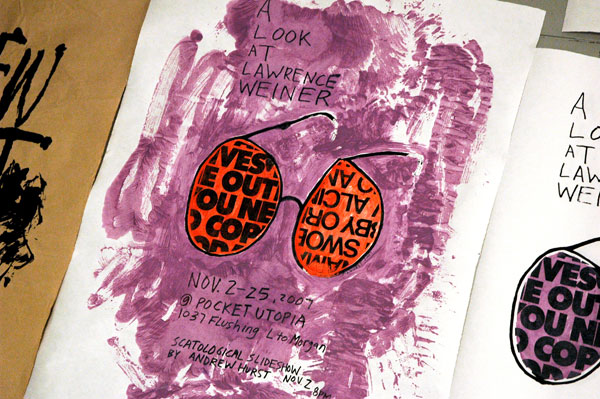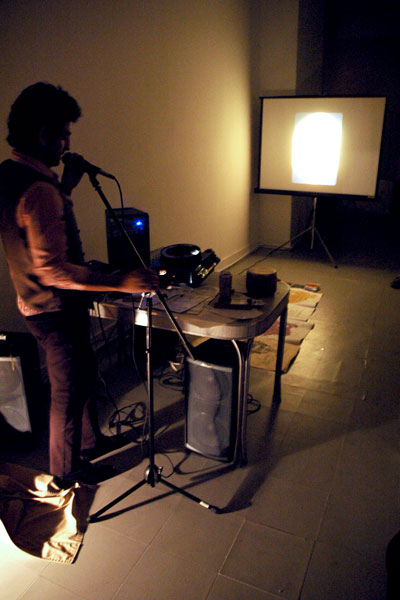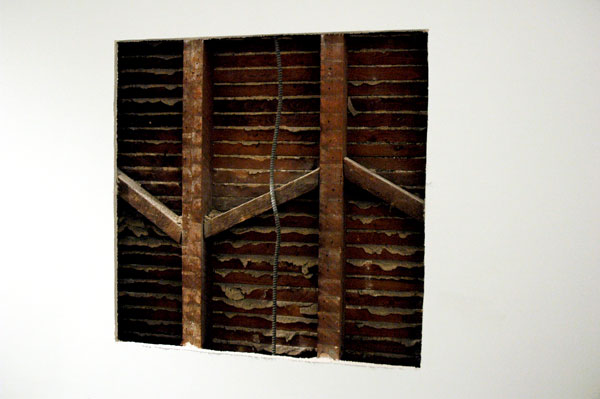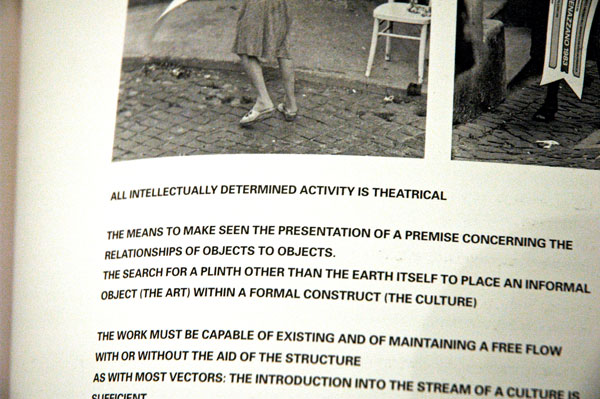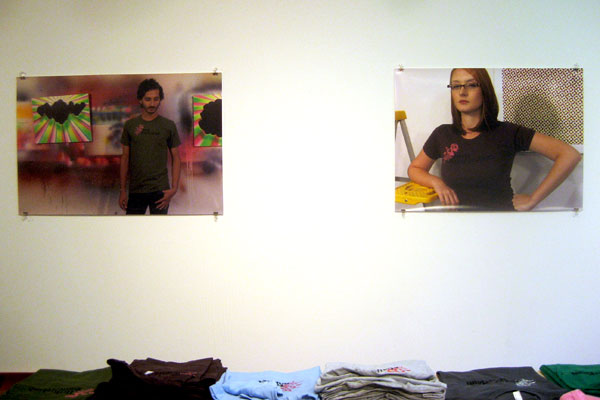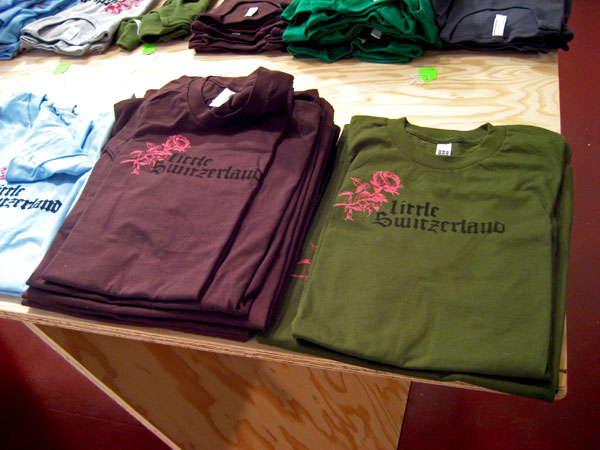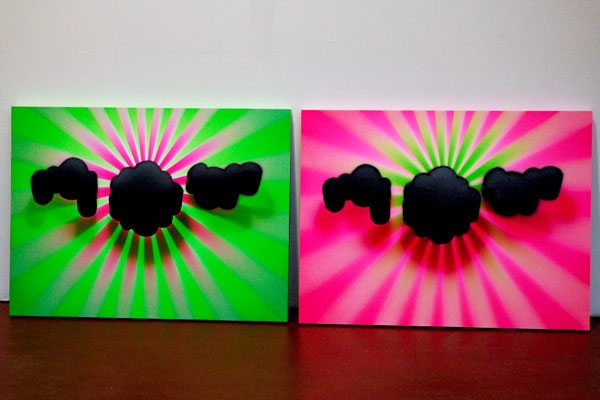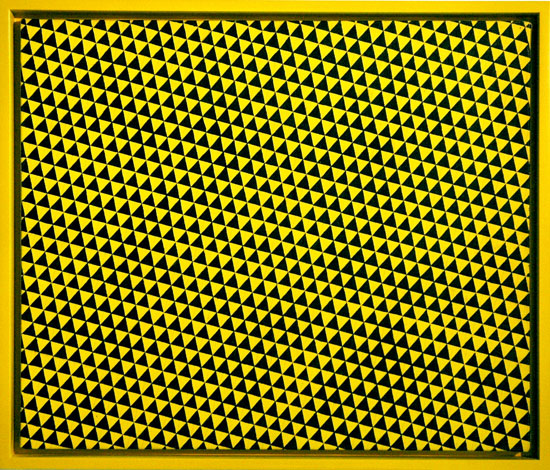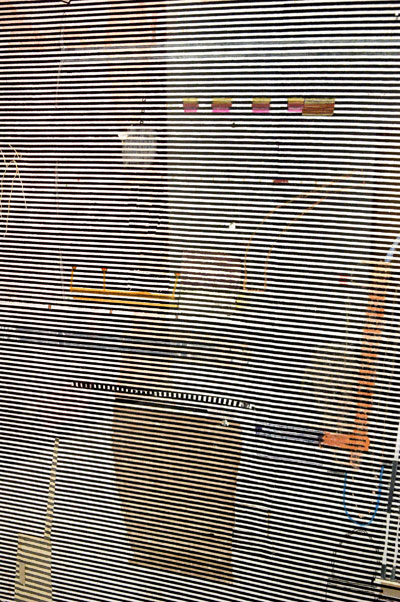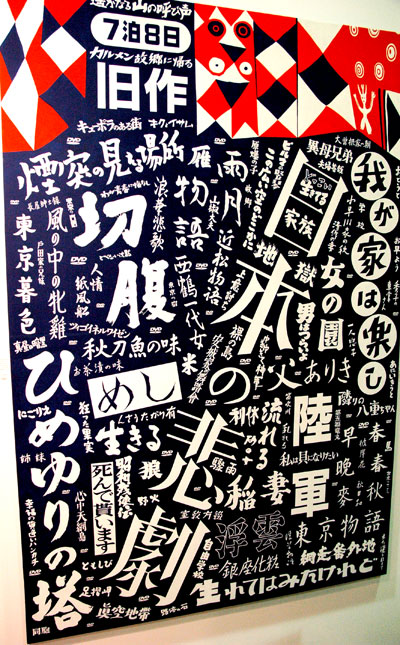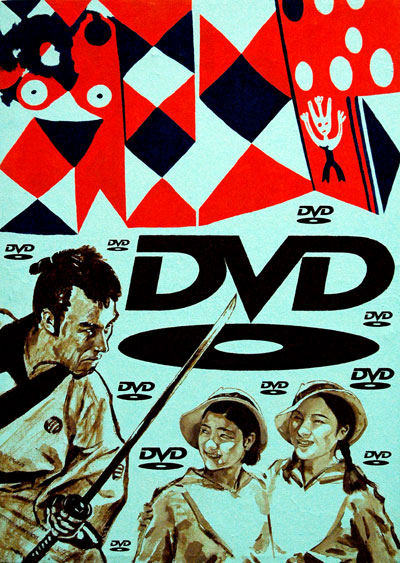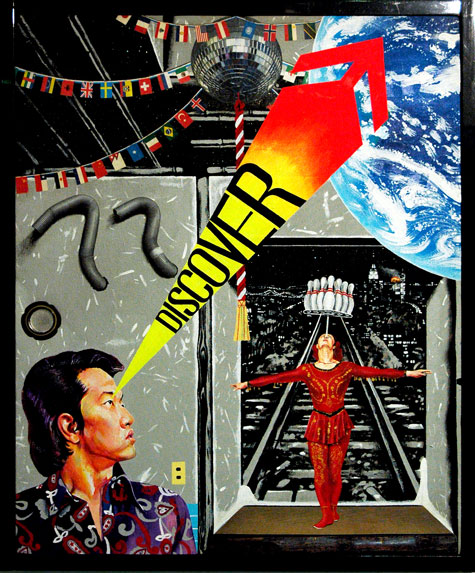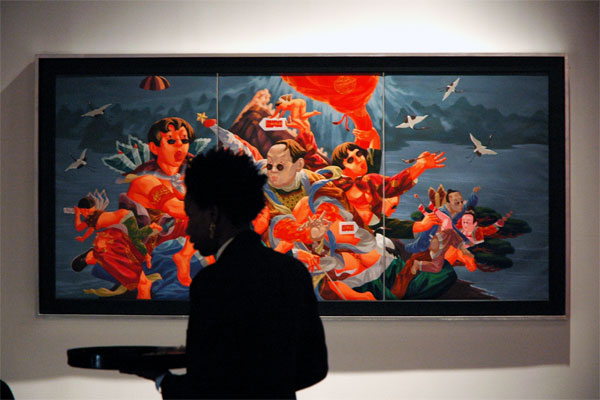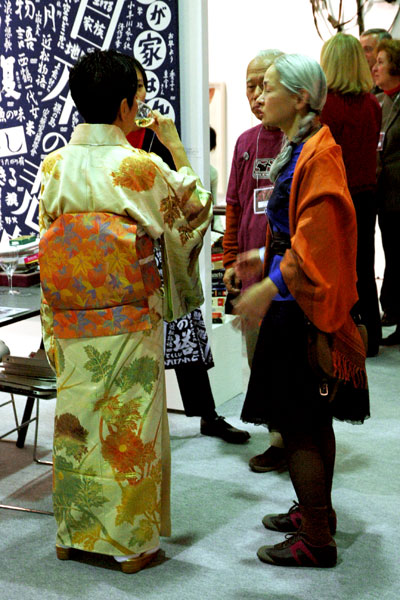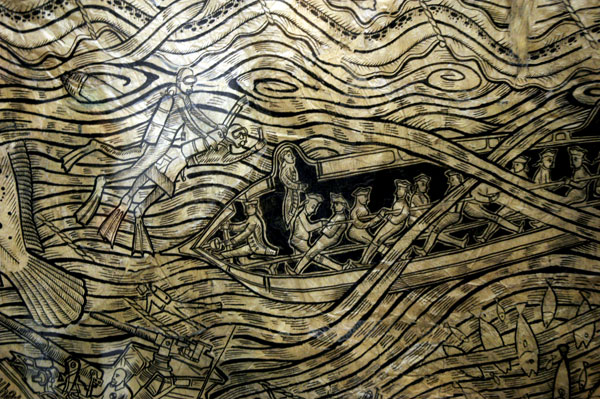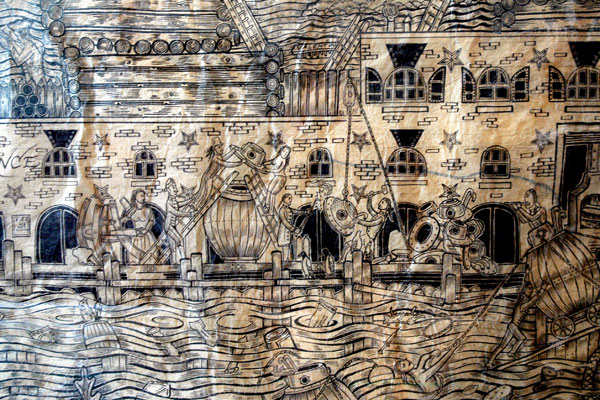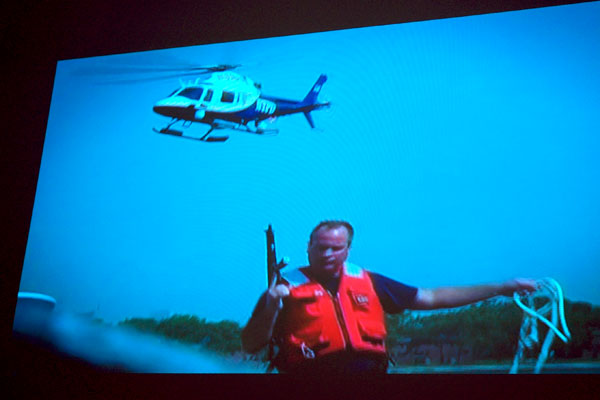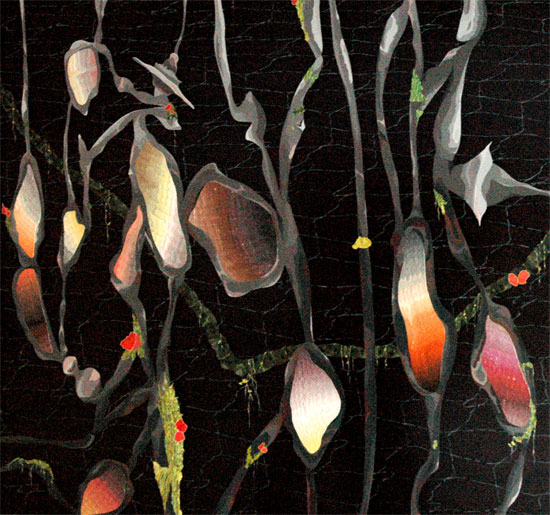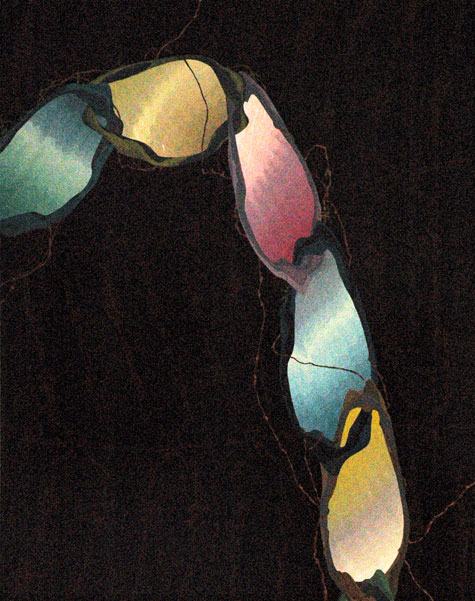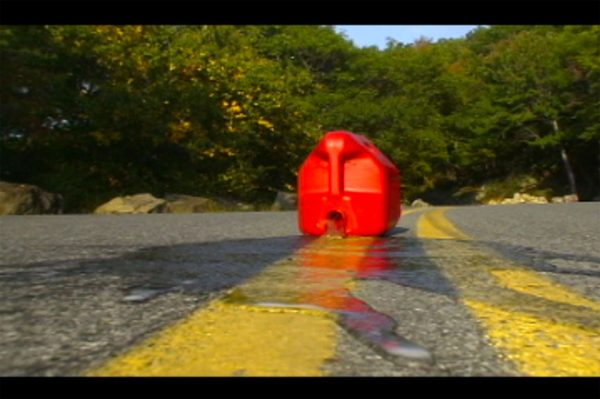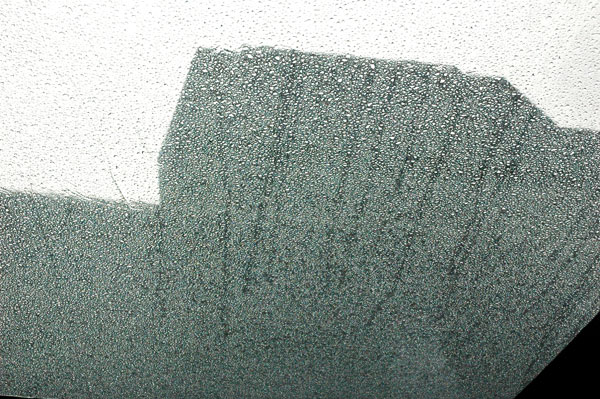
raindrops on the roof of the temporary tent at the entrance obscure the Bowery facade
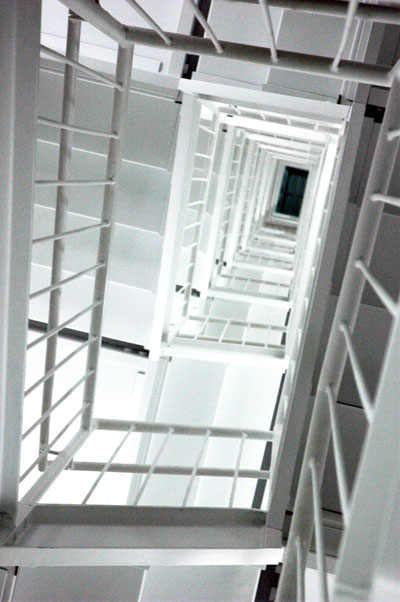
each of the building's sets of stairs is a star, including this interior tower
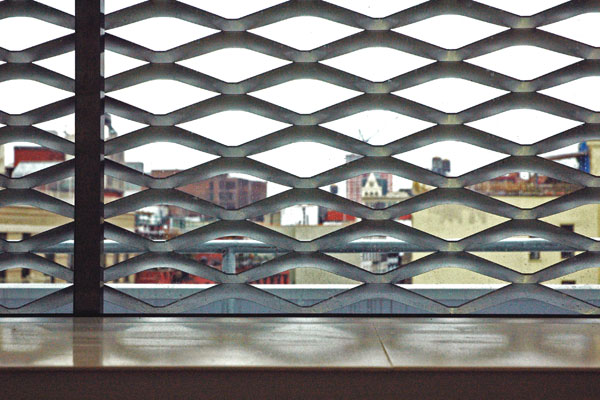
the aluminum mesh covering the facade shades this row of 4th-floor windows

on the interior stair landing, looking up from inside a niche used for installations

the larger elevator, a mobile color platform in the core of the tower, opens at either end

the very cool interior staircase frames or provides access to several installations
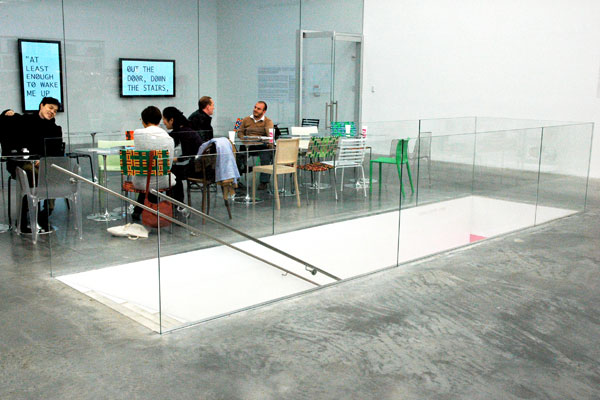
the cafe was not operating, but the light, the vantage, and the chairs were welcoming
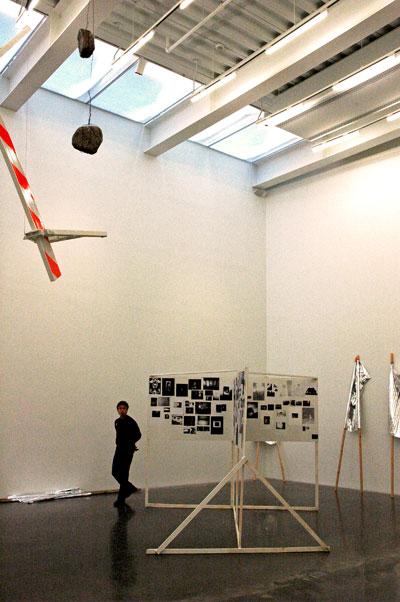
a view of the balance achieved between a building and work it briefly shelters
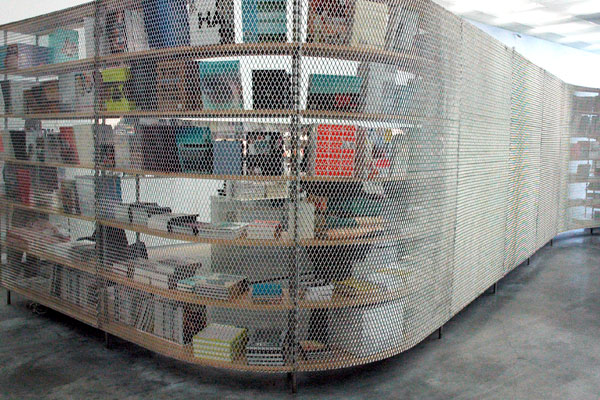
the outside curve of the bookstore wall on the south side of the ground floor
It was a thrill to welcome to the city this morning a splendid new house of art, the new New Museum. It stands on the Bowery on the Lower East Side, a neighborhood already changing rapidly but which still remains one of New York's most interesting.
I loved the Sejima + Nishizawa/SANAA building from the moment it was presented to us as a conception. That was in May of 2003. Construction began two years later and the Museum opens to the public December 1 [meanwhile, we're still looking at a big hole down at the World Trade Center site one mile southwest of the museum; always ask an artist, or arts person, if you want something done well]. Those who haven't already reserved a time slot for the marathon opening, a 30-hour window of opportunity which begins at noon on Saturday, will have to hold off until the initial excitement dies down. Their people say they've already given out the entire number of allotted timed tickets for those free hours of admission.
It's worth the wait. The building is as good inside as it is on the outside. There are several installations in various parts of the building, in addition to the major one. The three full-floor galleries are given over to the first wave of "Unmonumental: An Exhibition in Four Parts". It's a stunner.
It seems so very odd to be in a modern museum where the building itself is both very present (when presence is exciting and welcome), and discretely invisible (when invisibility is appropriate and appreciated). But what wonderful things fill these wonderful spaces! I was thrilled for to be able to experience truly contemporary art (almost emerging art) in a museum environment in New York for a change. In spite of what we're used to being told in this city and what we have finally come to expect, all Museums don't have to function only as warehouses for our authenticated treasures. The Smithsonian is not a proper model for the institutional treatment of the visual arts.
The founding director of the Museum of Modern Art, Alfred Barr, proposed to deaccession work the museum owned once it became 50 years old, in order to pay for the purchase of new work. Obviously MoMA has not followed through with this program. Whatever the merits of the arguments on either side, it is possible to argue that the increasing maturity of its vast treasures today has gradually caused MoMA to be distracted from its original purpose and lose its way as a leader or innovator in assembling and broadcasting the wonders of contemporary art. It's become increasingly difficult in recent decades to think of it as an institution able to lead in recognizing developments in the art world (if not actually the newest art itself) and for introducing it to and educating both a general public and arts institutions, presumably all with lesser talents and fewer resources.
We are told that the institution Marcia Tucker founded thirty years ago displays a deliberate paradox in its name, "New Museum", but the fact that its fans and even its critics have never really thought of it as a museum probably isn't much related to our disappointment with MoMA. Museums really are repositories, and we've always known that the New Museum functions more like a European Kunsthalle, way ahead of the old guys, but maybe only one step behind the kids working the best trailblazing and innovative galleries somewhere along the front lines.
May our New Museum never bury itself under an acquired stash, no matter how worthy (I've heard there are plans to begin maintaining a permanent collection for the first time), and may it never grow old.
_____
I expect to do a follow-up post with images of a few installations, and even the images above don't include all of my favorite things about the inside spaces of the building itself. I'm thinking of the neat little theater in the basement and the elegant penthouse space at the top, and the possibilities suggested by both; the beautiful stylized flowers on the tile walls of the basement restrooms; the tantalizing, open-plan bookstore; the glass-walled gallery located at the back of the ground floor and which is apparently able to isolate installations that include sound; the anticipation of the 5th-floor "Education Center" as an important international nexus for new art and new art forms; the beautiful floors; and over and over the architectural and profoundly urban pleasure of discovering an unexpected outside window, skylight or door.

